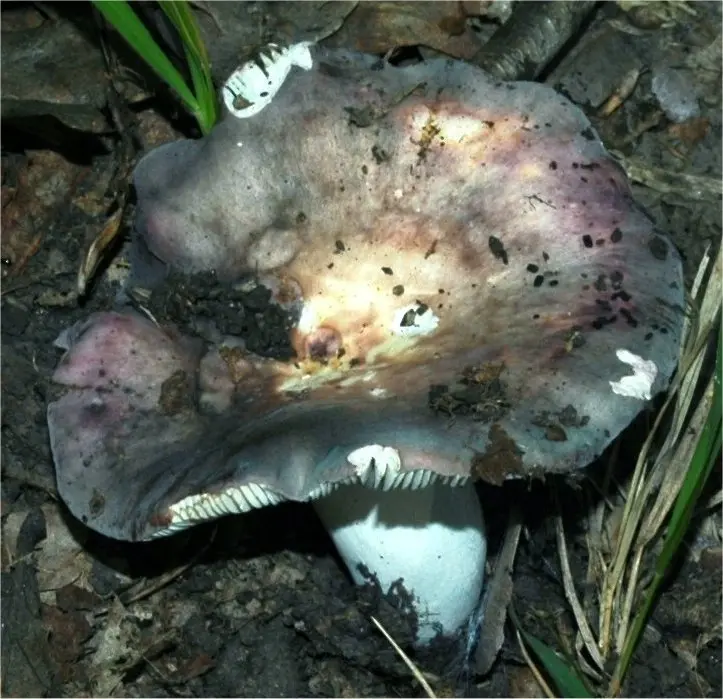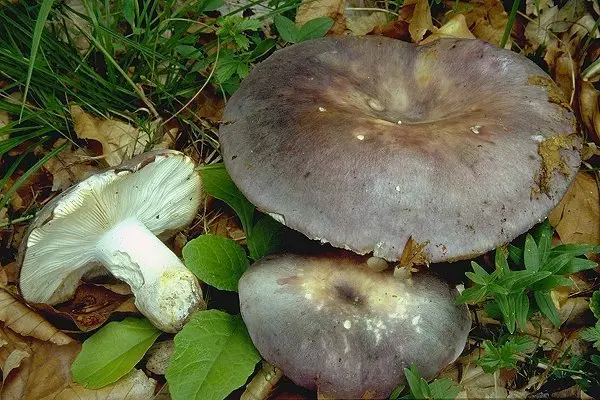Russula blue-yellow (lat. Russula cyanoxantha)
- Division: Basidiomycota (Basidiomycetes)
- Subdivision: Agaricomycotina (Agaricomycetes)
- Class: Agaricomycetes (Agaricomycetes)
- Subclass: Incertae sedis (of uncertain position)
- Order: Russulales (Russulovye)
- Family: Russulaceae (Russula)
- Genus: Russula (Russula)
- Type: Russula cyanoxantha (Russula blue-yellow)

The hat of this mushroom can have a wide variety of colors and many shades. Most often it is purple, gray-green, blue-gray, the middle can be ocher or yellow, and the edges are pink. During wet weather, the surface of the cap becomes shiny, slimy and sticky, acquires a radial fibrous structure. First russula blue-yellow has a semicircular shape, then it becomes convex, and later takes on a flat appearance with a depression in the middle. The cap diameter is from 50 to 160 mm. The mushroom plates are frequent, soft, non-brittle, about 10 mm wide, rounded at the edges, free at the stem. At the beginning of development, they are white, and then turn yellowish.
The cylindrical leg, fragile and porous, can be up to 12 cm high and up to 3 cm thick. Often its surface is wrinkled, usually white, but in some places it can be painted in a pale purple color.
The mushroom has white pulp, elastic and juicy, which does not change color on the cut. There is no special smell, the taste is nutty. Spore powder is white.

Russula blue-yellow common in deciduous and coniferous forests, can grow both in the mountains and in the lowlands. Growth period from June to November.
Among russula, this mushroom is one of the most delicious, it can be used as a side dish for meat dishes, or boiled. Young fruiting bodies can also be pickled.
Another russula is very similar to this mushroom – gray russula (Russula palumbina Quel), which is characterized by a purple-gray hat, white, and sometimes pinkish, a leg, fragile white plates. Russula gray grows in deciduous forests, it can be collected in summer and autumn.









